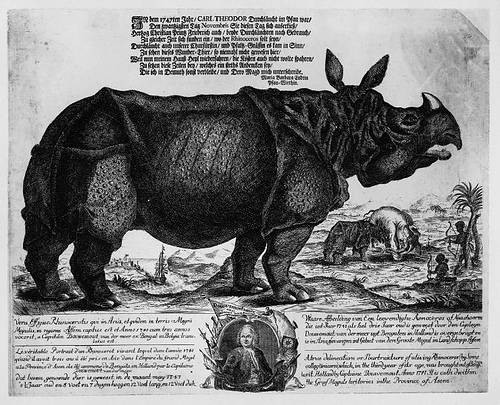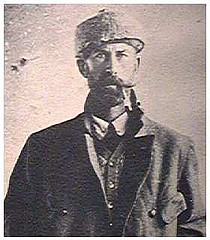In Boston’s Museum of Science is a computer made of Tinkertoys that plays tic-tac-toe.
It has never lost a game.
In Boston’s Museum of Science is a computer made of Tinkertoys that plays tic-tac-toe.
It has never lost a game.

The “Death’s-head Dungeon,” from Henry Dudeney’s Canterbury Puzzles (1908), in which a youth rescues a noble demoiselle from a dungeon belong to his father’s greatest enemy:
“… Sir Hugh then produced a plan of the thirty-five cells in the dungeon and asked his companions to discover the particular cell that the demoiselle occupied. He said that if you started at one of the outside cells and passed through every doorway once, and once only, you were bound to end at the cell that was sought. Can you find the cell? Unless you start at the correct outside cell it is impossible to pass through all the doorways once, and once only.”
Being a slave was hard enough in the American South — but wanting to escape was once classified as a psychiatric disorder. In 1851, physician Samuel A. Cartwright of the Louisiania Medical Association decided that runaway slaves suffered from “drapetomania”:
If the white man attempts to oppose the Deity’s will, by trying to make the negro anything else than ‘the submissive knee-bender’ (which the Almighty declared he should be) by trying to raise him to a level with himself, or by putting himself on an equality with the negro; or if he abuses the power which God has given him over his fellow-man, by being cruel to him, or punishing him in anger, or by neglecting to protect him from the wanton abuses of his fellow-servants and all others, or by denying him the usual comforts and necessaries of life, the negro will run away; but if he keeps him in the position that we learn from the Scriptures he was intended to occupy, that is, the position of submission; and if his master or overseer be kind and gracious in his hearing towards him, without condescension, and at the same time ministers to his physical wants, and protects him from abuses, the negro is spell-bound, and cannot run away.
Cartwright wrote that with “proper medical advice, strictly followed, this troublesome practice that many Negroes have of running away can be almost entirely prevented.” But for slaves who were “sulky and dissatisfied without cause,” he recommended “whipping the devil out of them” as a “preventative measure.”

An enterprising rhinoceros could make a pretty good living in 18th-century Europe, where people clamored to see such an outlandish creature. A rhino named Clara toured the continent for 17 years in a special wooden carriage, meeting royalty in England, France, Prussia and Poland and posing for portraits and sculptures. The French navy even named a ship after her.
She died in 1758, probably wondering what all the fuss was about.
gynotikolobomassophilia
n. a proclivity for nibbling on women’s earlobes
August 18, 1765. One Carr, a waterman, having laid a wager, that he and his dog would leap from the centre arch of Westminster Bridge, and land at Lambeth, within a minute of each other; he jumped off first, and the dog immediately followed him; but the faithful animal not being in the secret, and fearing his master should be drowned, laid hold of him by the neck, and dragged him to the shore, to the no small diversion of the spectators.
— Annual Register, 1765

Victoria Crater, on Mars. The black dot on the rim, at about the 10 o’clock position, is the Mars rover Opportunity. Expected to fail after 90 days, it has been exploring faithfully for more than three years.

Percy Fawcett set out to solve a mystery and only compounded it. In 1925, after studying ancient legends, the British archaeologist became convinced that the dense Matto Grosso region of western Brazil concealed a lost city that he called “Z.” In May he set out with two other men into the uncharted jungle, leaving a note that none should try to rescue them if they did not return.
They didn’t. The decades that followed brought many rumors: Fawcett had been murdered by Indians, killed by a wild animal, stricken with amnesia or felled by illness. In all, 100 rescuers in 13 expeditions have died trying to discover what happened to him. To this day, no one knows.
Mr. James Wrigley, master of the Golden Lion inn, at Liverpool, going into his cellar, October 26, 1759, having some oysters there, a large Norway rat, endeavouring to seize an oyster that was open, it closed, and held him so fast, that he was carried into the kitchen, and exhibited to some hundred persons, while alive.
— Annual Register, 1759
Cricketer I.L. Bula played nine first-class matches for Fiji between 1947 and 1954.
Sportswriters must have been glad he didn’t use his full name — it was Ilikena Lasarusa Talebulamainavaleniveivakabulaimainakulalakebalau.